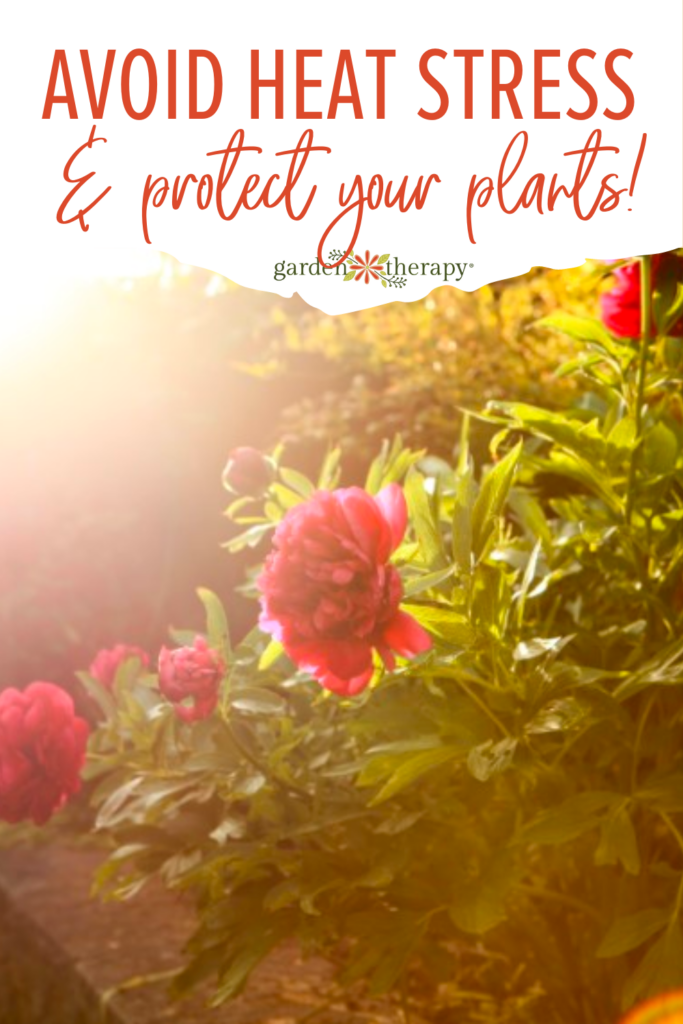Hot weather can be hard on your plants. Just like us, they need special care in extreme heat. Even with adequate watering and mulching, plants can suffer when the temperatures rise. But, there are a few things you can do to help protect plants from heat stress during the hottest part of the summer.
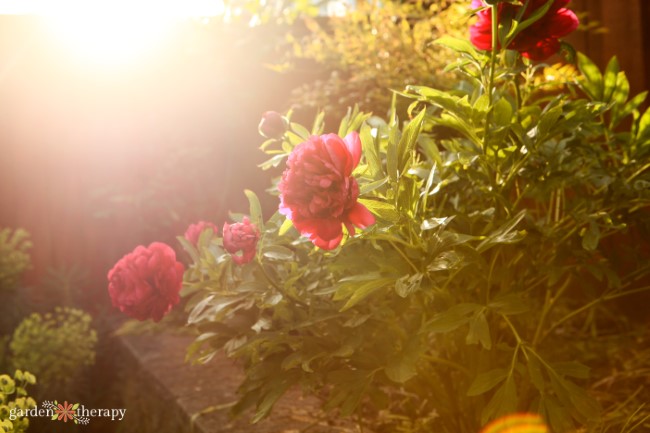
By the time summer rolls around, our gardens have done plenty of growing and have reached their peak. Blooms and harvests are abundant, as the warm weather and strong sunshine powers the growth and production of plants.
But too much of a good thing can still be detrimental. When temperatures soar, especially consistently, our plants can struggle, and the gardener needs to step in.
Most of my garden consists of perennials, so I don’t have to worry about watering very often. But usually, a few times a summer, temperatures will get so high that even my old and established perennials will require a drink of water and a break from the heat.
There have been temperatures so high that I was out watering twice a day! Annuals and vegetables are especially prone to needing some help from the heat.
Knowing what to do ahead of a heat wave and how to protect plants from heat stress is one of the most valuable lessons for a gardener, so let’s dive in.
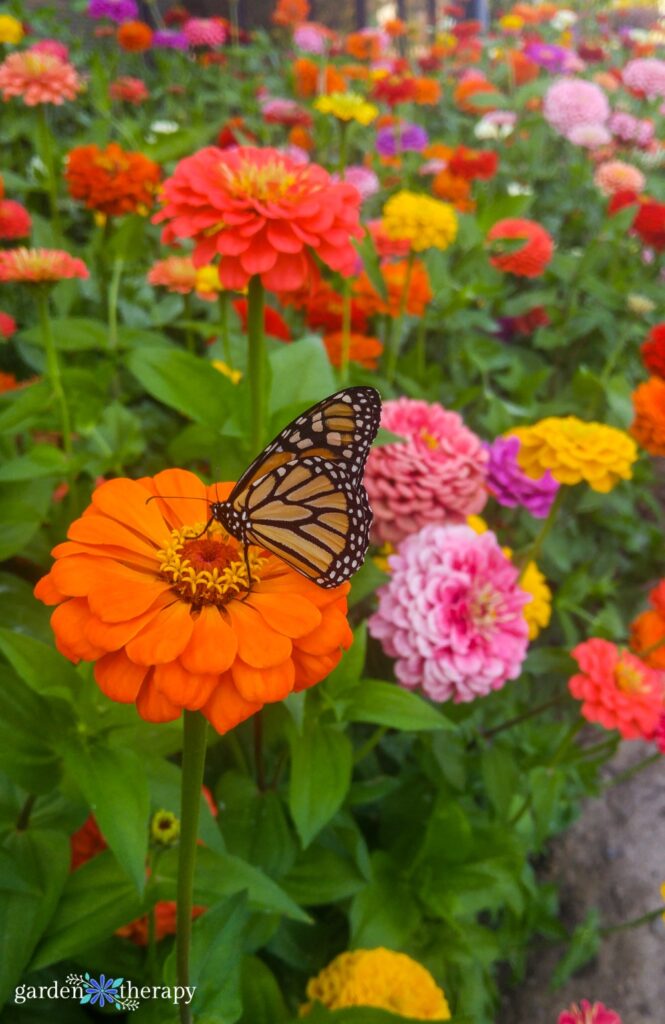

Water Correctly to Prevent Heat Stress in Plants
To keep your plants cool in hot weather, you must ensure they don’t get too thirsty. Watering is essential when it’s hot, but watering correctly is far more important.
Watering in the morning or early evening is best for your garden. Giving them water midday is inefficient, and most of it will evaporate before it gets to the roots.
Strive for a deep watering two or three times a week. Using a drip irrigation system or a soaker hose will ensure deep watering. If you do not have an irrigation system, an overhead sprinkler or hand watering will work, just do it in the cool hours of the morning or early evening.
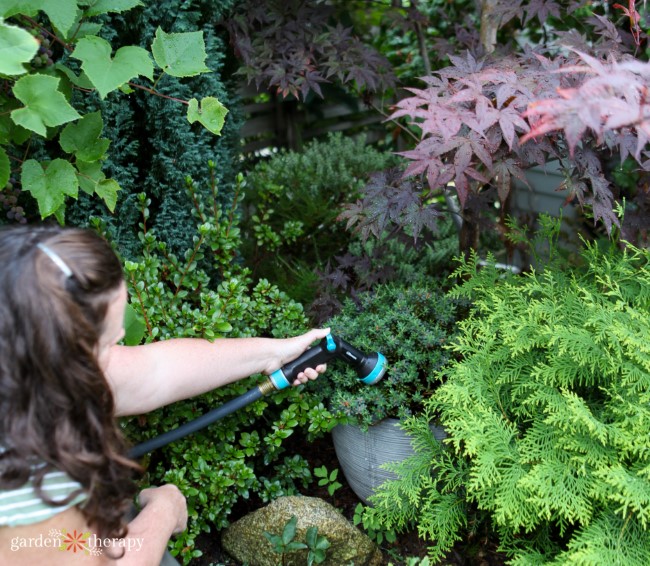

Don’t Overwater
Too much water can cause damage to your plants as much as under-watering can. Heat and sun exposure will cause leaf wilt, occurring because of transpiration, or when a plant releases moisture to protect itself from excessive heat. The leaves are wilting, so there is less surface area for sun exposure.
“But,” you say, “they look so thirsty!?” Resist the temptation to water and feel the soil for moisture first. Overwatering can lead to root rot or fungal diseases (when a plant is continuously overwatered, it can deprive the roots of oxygen and promote the growth of fungi in the soil). Don’t worry, your plants will bounce back when the sun goes down.
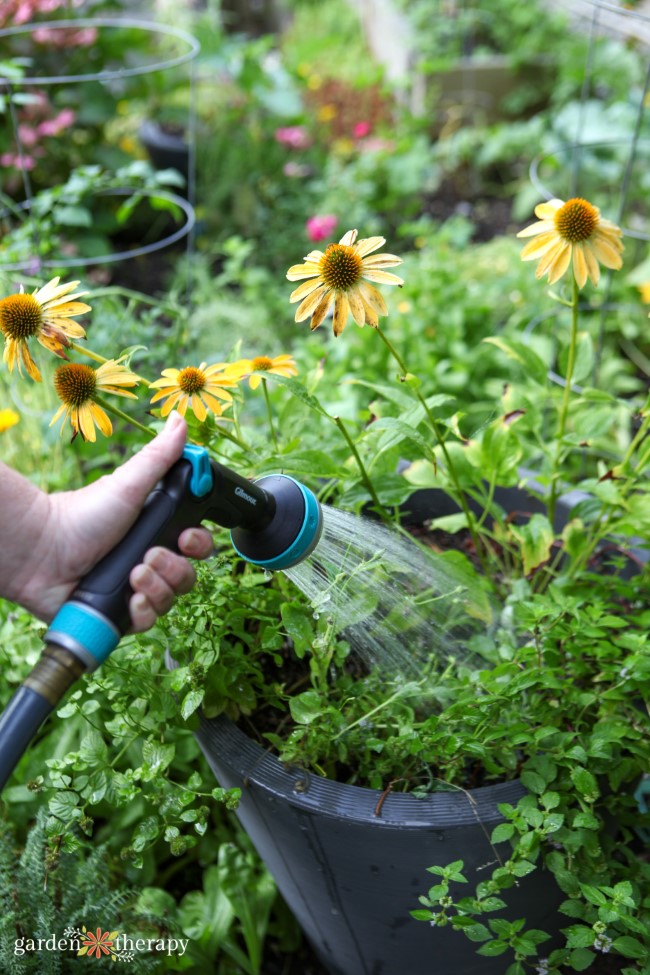

Add Mulch
To protect plants from heat, consider adding mulch. A thick layer of mulch helps insulate the plant’s roots from both heat and cold. It will also help keep the soil moist.
If your garden is prone to extreme temperatures, strive for at least 4-6 inches of mulch in your garden. Straw, pine needles, leaves, and grass clippings make good, inexpensive mulch. Lay it on thick; your plants will love you for it.
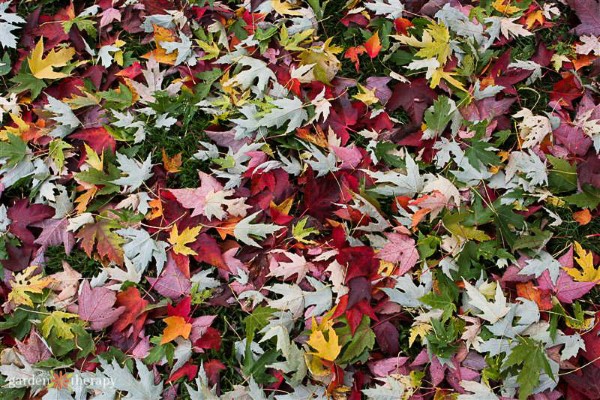

Prevent Sunburns
During extreme heat, plants will cease flowering and can get sunburned. When temperatures get into the mid-90s Fahrenheit, plants like peppers, tomatoes, and eggplants hold back flowering.
The leaves of a sun-damaged plant turn white. It can be the only sign of sunburn and is the most prominent one. When in a greenhouse, the leaves receive plenty of filtered light. After they leave a greenhouse and are exposed to full sun, the plants often aren’t ready to handle the extra UV rays.
To avoid sunburns, slowly let the plant harden off. This means giving it some sunlight, but not full sun, before you plant it in your garden. Slowly give it more sun exposure until the plant has toughened up. Just like us, we must build a base tan or risk getting a sunburn.


Utilize Plant Shade Covers
Once your plant has a sunburn, the best thing you can do is get it some shade so it can recuperate and grow new leaves. Adding shade for plants during the hottest part of the day will prevent any burns and wilting plants.
Patio Umbrella
For a small area, consider a patio umbrella. Put the umbrella up during the hot afternoon sun so your plant doesn’t get the intense UV rays, but still receives the nice morning and late afternoon sun.
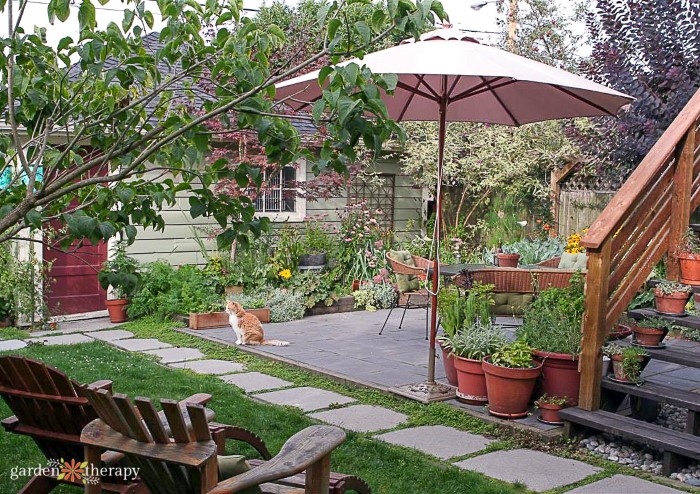

Shade Sail
Much like an umbrella, you can use shade sails to keep both yourself and your plants protected from the sun. This works great if you have an area in between a house, tree, or shed to drape the shade sail between.
Shade Cloth
Garden fabric creates excellent sun protection for plants. Most of the fabric is light enough that it can be draped directly over plants. For plants that may be a little more delicate, such as tomatoes, you can use support hoops to keep the fabric off the plants.
Bed Sheet
Another easy plant shade cover, use a bedsheet to drape over a trellis to create a shady section of your garden. Any lightweight fabric will do, but I find that everyone has a spare bedsheet they can use for this.
Feel free to plant stakes around your plants if you have no way to drape the fabric securely over the plants. Make sure the sheet hovers a few inches above the plant so as not to damage it.
Window Screens
If you’re feeling exceptionally crafty and want something a little more permanent, consider using window screen fabric and a plastic or steel frame to create an open greenhouse with shade for plants instead.
Protect Potted Plants
To protect potted plants from heat, you can use many of the same plant shade covers as you would in your garden. While garden plants must stay put, many containers have the ability to be moved. Place them under a porch or in full shade if possible on exceptionally hot summer days.
Containers tend to dry out faster and will need more frequent watering than your garden plants. Check your potted plants and hanging baskets every morning to ensure they aren’t dry.
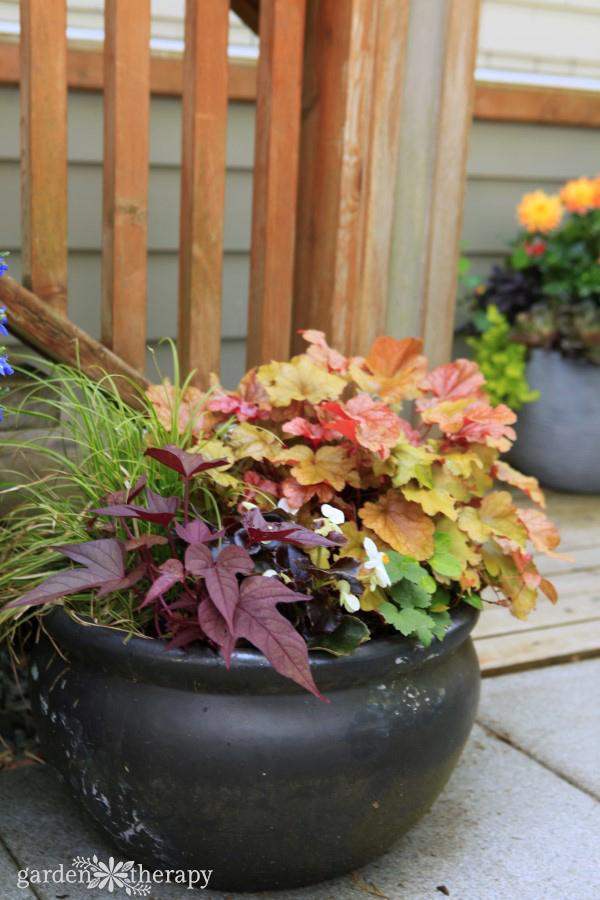

Choose Heat-Tolerant Plants
Many plants out there love the sun and thrive in the intense heat of summer’s peak. For more information and a list of plants that will stay happy and vibrant throughout summer, head on over to this post about heat-tolerant plants.
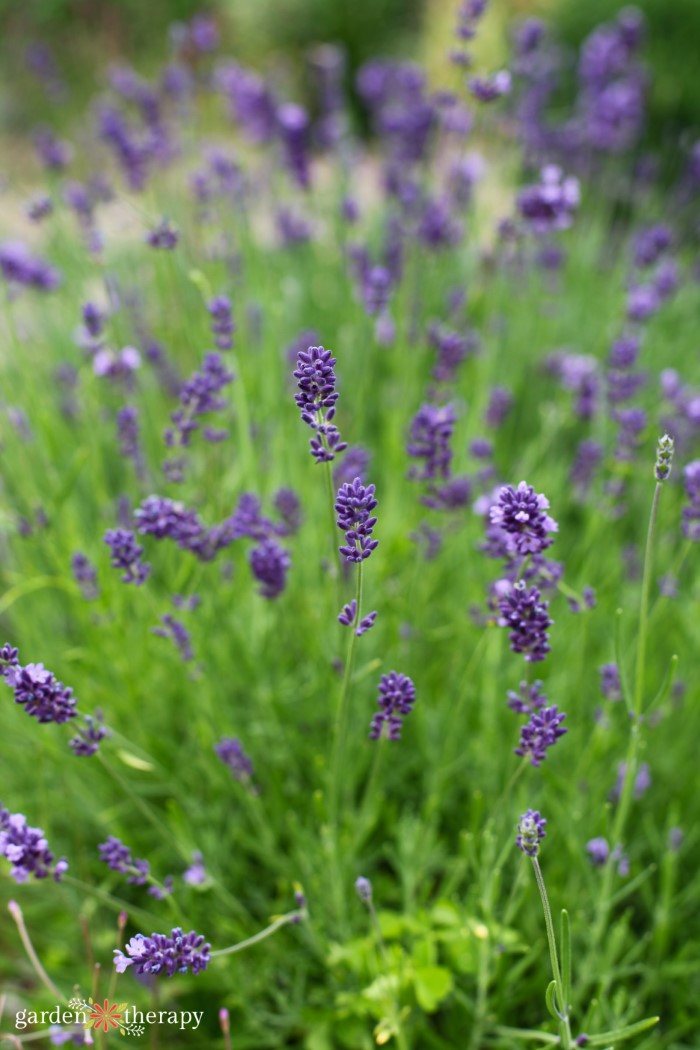

Take Care of Yourself
Most importantly, make sure you are taking the right safety precautions when out gardening in the heat. Skip the hottest part of the day when doing garden chores and instead head out to the garden in the morning and evening. Work in shorter increments and take regular breaks. Gardening in the summer at a much slower pace; listen to your body if you need to take a break, and avoid heat stress.
Apply sunscreen, sun protection lip balm, and wear a hat. Like your plants, be sure to stay hydrated. Sweating will help cool your body down, but you need to keep your body replenished. Water is best for hydration, but you can also quench your thirst with a cool glass of sun tea or lavender lemonade!
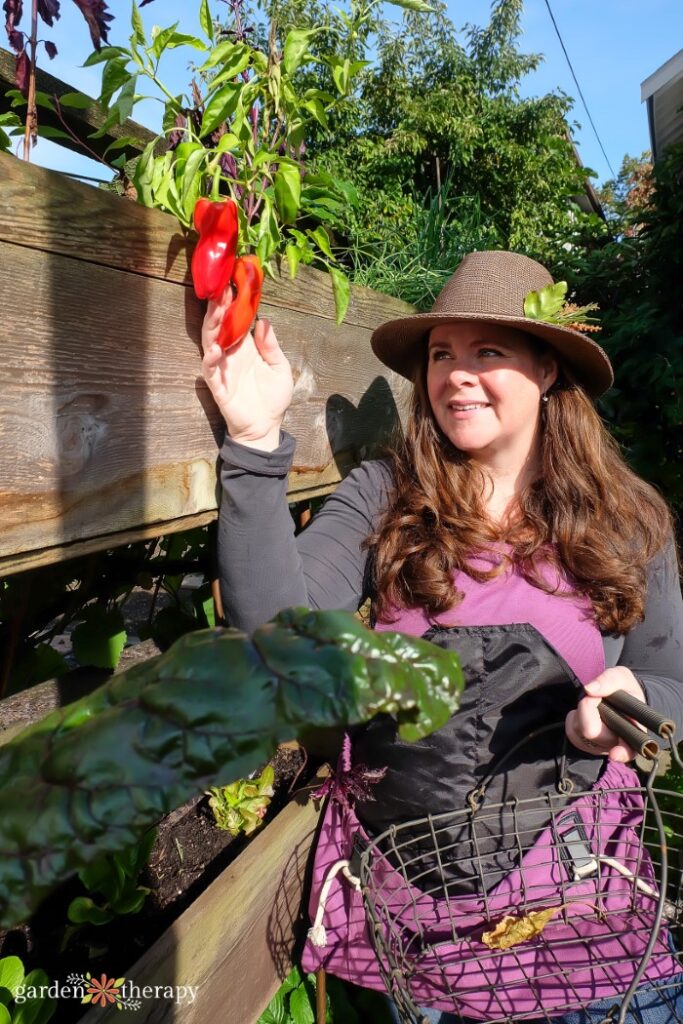

Plants and Heat FAQ
It’s going to depend on if your plants are cool season or warm season vegetables. If it’s the peak of the summer, I don’t worry about protecting cool season plants anymore, because it’s simply no longer their season!
Warm season plants enjoy the heat, but might need protection if temperatures are consistently over 90°F (32°C).
The first thing you want to do if you suspect heat damage to your plant is to take a look at the soil and see if it has enough water. Stick your finger in the soil and feel down until your second knuckle. If it’s dry all the way to your second knuckle, give it a deep watering by watering at the base of the plant.
Next, try to provide it with some shade. If it’s in a pot, move it somewhere more shady. If the plant is in a garden bed, move an umbrella over the top of it or throw over some shade cloth or a bedsheet during the prime sunlight hours.
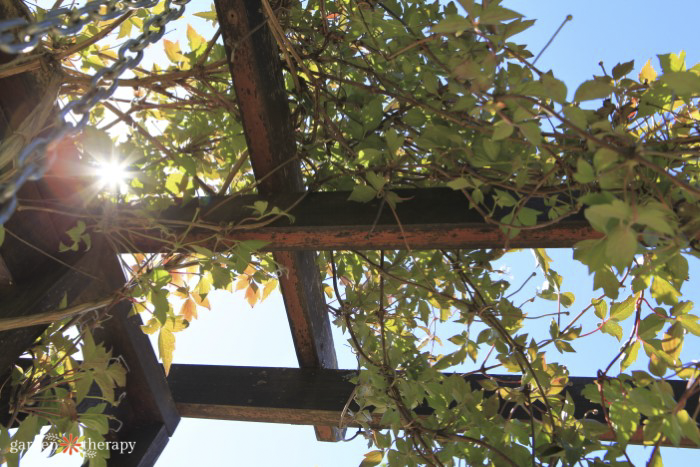

While the heat of the summer can certainly take its toll on us and our gardens, following these tips on how to protect plants from heat will make the summer that much more enjoyable. The plants will be happy, and you won’t have to worry about them! Cooler days will be here before you know it, so enjoy the warm weather while it lasts.
More Tips for Summer Gardening
Debbie Wolfe is a mom of two rambunctious boys, wife, and work-at-home mom from Georgia. In her free time (when there is such a thing), she is in the garden or hidden away reading the latest post-apocalyptic sci-fi drama! As interests, Debbie is an obsessive crafter, home chef, and gardener. She is a freelance writer, blogger, and is a co-author and photographer behind the garden blog, The Prudent Garden; a collection of tips, crafts, and articles that highlight home gardening.


